Episodes
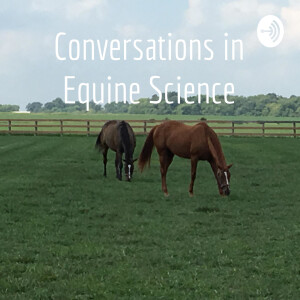
Friday Jul 31, 2020
Friday Jul 31, 2020
The research we talk about this week is in relation to the following scientific paper:
Lanata, Antonio et al (2018). A Case for Interspecies Transfer of Emotions: A Preliminary Investigation on How Human Odors Modify Reactions of the Autonomic Nervous System in Horses. Conference proceedings : Annual International Conference of the IEEE Engineering in Medicine and Biology Society. IEEE Engineering in Medicine and Biology Society. Annual Conference, 2018, pp.522–525.
Next week we continue our discussion on fear based reactions in horses and riders by discussing the PHd thesis entitled "Fear in the horse and how it is effected by the rider, training and genetics. This will be a 3 part series. Author: Ute Ulrike von Borstel (2007).
We hope you join us! We appreciate each and every one of you!
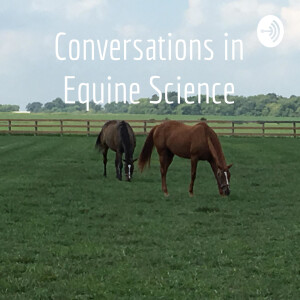
Friday Jul 24, 2020
Friday Jul 24, 2020
Jarvis, N., Paradis, M.R., Harris, P. (2019) Nutrition considerations for the aged horse.
Equine Veterinary Education 31(2), pp 102-110.
Summary: "As the proportion of aged horses within the general equine population appears to be increasing in the UK and other developed countries, it is important to be aware of the changing dietary requirements associated with the aging process and age related diseases. This review provides guidelines for optimal nutrition of the older horse with practical approaches to improve or maintain body condition and support general health."
Listen in as Kate and Nancy discuss these guidelines and recommendations.
Below is the link to Equi-Analytical for Hay/Fresh Forage and Grain analysis.
https://equi-analytical.com/common-feed-profiles/interactive-common-feed-profile/
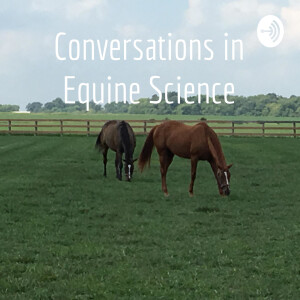
Friday Jul 17, 2020
Friday Jul 17, 2020
This is our first interview of the series. You can check out Brittany and her business at Davis Equine Services, Didsbury, Alberta, Canada. The website address is davisequine.ca (Due to internet differences there may be some sound discrepancies).
Next week Kate and Nancy will be back assessing research on the nutritional needs of senior horses.
Thank you for listening!

Friday Jul 10, 2020
Friday Jul 10, 2020
Pagan, J.D., Martin, O.A., Crowley, N.L. (2009).Relationship Between Body Condition and Metabolic Parameters in Sport Horses, Pony Hunters and Polo Ponies. Journal of Equine Veterinary Science, 29(5). pp. 418-420.
Obesity has been associated with insulin resistance in horses and ponies. This study seems to conclude that overweight sport horses and ponies are less likely to be hyperinsulinemic than sedentary horses and ponies.
Equine Metabolic Syndrome can be controlled through a management protocol of diet and exercise.
Points to note:
1. The cresty neck score is designed to assess the amount of fatty deposits in the horse’s nuchal ligament area. This assessment is independent of body condition score.
2. It is recommended that you use a combination of palpation and visualisation to obtain the score.
3. The characteristics of different breeds may influence your score. For example, you are likely to score a Draught horse higher than a Thoroughbred when they may in fact have the same degree of fat deposits.
Cresty Neck Score: (0 to 5 scale, 3 and above is considered problematic.)
0 - no crest or fat deposit present
1 - no visual appearance, but fat can be palpated.
2 - noticeable appearance of a crest, but fat deposited fairly evenly from poll to withers. Crest easily cupped in one hand and bent from side to side.
3 - Crest enlarged and thickened, so fat is deposited more heavily in middle of the neck than toward poll and withers, giving a mounded appearance. Crest fills cupped hand and begins losing side to side flexibility.
4 - Crest grossly enlarged and thickened, and can no longer be cupped in one hand or easily bent from side to side. Crest may have wrinkles/creases perpendicular to topline.
5 - Crest is so large it permanently droops to one side.
Cresty Neck Ratio: Circumference of middle of neck in inches (neck should be in a relaxed position) divided by Height in inches. (Centimeters can also be used)
If answer is greater than .63 in a horse or .68 in a pony it is time to take action to begin reducing that crest.
Link to FeedXL for nutritional support:
https://feedxl.referralrock.com/l/1NANCYMCLEA17/
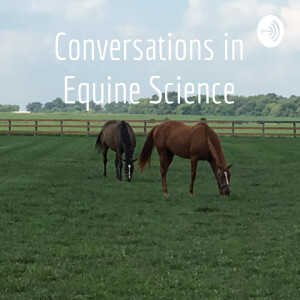
Friday Jul 03, 2020
Friday Jul 03, 2020
This week Kate and Nancy delve into the research of Dr. David Mellor and N.J. Beausoleil (2017). The paper is entitled Equine Welfare during exercise: An evaluation of breathing, breathlessness and bridles. This was published in Animals, 7(6) p. 41.
Dr. Mellor also recently published (2020) "Mouth pain in horses: Physiological Foundations, Behavioral Indices, Welfare Implications and Suggested Solution. (Free on Google Scholar).
Dr. David Mellor's Youtube link and presentation: https://www.youtube.com/watch?v=rY4yEC7lhco
Bits in U.S. racing: https://www.paulickreport.com/news/nl-list/thats-a-mouthful-racing-bits-explained/#:~:text=Cook%20has%20campaigned%20unsuccessfully%20to,so%20far%20not%20permitted%20it.
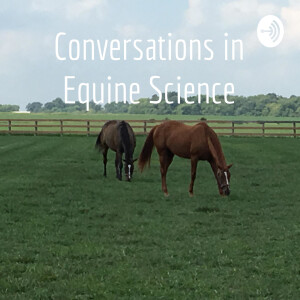
Friday Jun 26, 2020
Friday Jun 26, 2020
This research was an investigation by I.A. Wolframm, J. Williams and D. Marlin. Kate and Nancy discuss the ramifications and conclusions of this study.
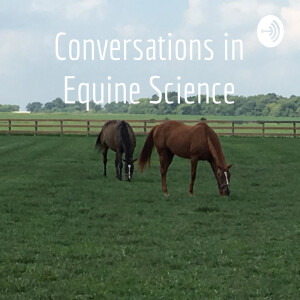
Friday Jun 19, 2020
Friday Jun 19, 2020
In this introductory episode, Kate and Nancy discuss their Edinburgh experience in the Equine Science MSc and how they have gone from teaching partners to podcast co-hosts.
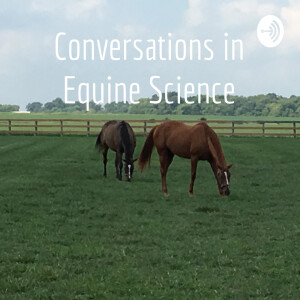
Thursday Jun 18, 2020





